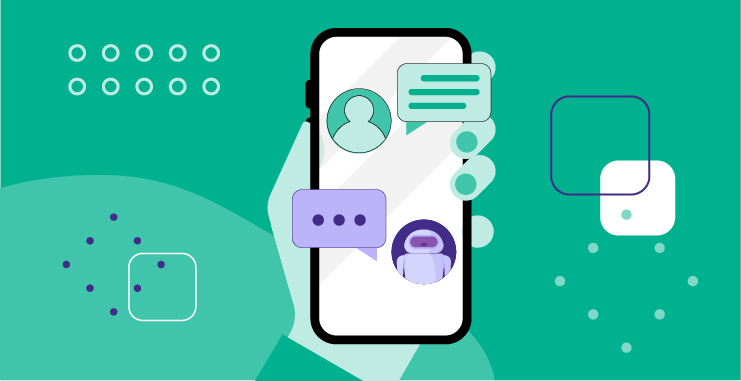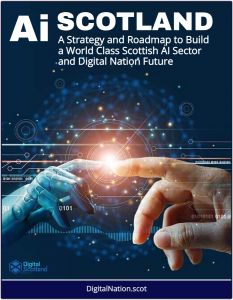Care Connect AI – Developing an AI-Powered ‘No Wrong Door Chatbot’ for Scottish Social Services
To streamline access to social support by enabling a conversational AI service that guides users to relevant resources, benefits, or services across sectors.

 Care Connect AI is a proposed initiative to unite multiple third sector organizations (e.g., charities, community groups) and government agencies (e.g., local authorities, public service departments) in creating a shared, dynamic knowledge base of social support services.
Care Connect AI is a proposed initiative to unite multiple third sector organizations (e.g., charities, community groups) and government agencies (e.g., local authorities, public service departments) in creating a shared, dynamic knowledge base of social support services.
This centralized repository will power a ‘No Wrong Door’ AI chatbot, deployable across partner websites, to provide seamless, accurate signposting to citizens seeking support, regardless of their entry point.
The project will promote equity by being accessible (simple language, voice input options) and multilingual, reducing barriers for vulnerable citizens. Further benefits will include cutting wait times for advice from weeks to minutes and freeing up third sector advisors for complex cases.
It’s expandable, and could be integrated into more government portals to further embed the “no wrong door” principle across a nations fragmented social support ecosystem.
Objective
To streamline access to social support by enabling a conversational AI service that guides users to relevant resources, benefits, or services across sectors (e.g., housing, healthcare, welfare, employment support), reducing confusion and ensuring equitable access.
Stakeholder Engagement
- Third Sector Organizations: Engage charities, NGOs, and community groups to contribute expertise on local and specialized services (e.g., food banks, mental health support, disability advocacy). These partners will provide content for the knowledge base and validate its accuracy.
- Government Agencies: Involve local and national government bodies to supply authoritative data on public services, eligibility criteria, and legal frameworks (e.g., welfare benefits, social care entitlements). They ensure compliance with regulations and alignment with policy updates.
- Citizen Representatives: Include community advocates to co-design the system, ensuring it meets diverse user needs (e.g., simple language, cultural sensitivity).
- Technology Partners: Collaborate with AI developers and platform providers to build and maintain the chatbot, ensuring scalability, accessibility (e.g., multilingual support, voice input), and integration into diverse websites.
Knowledge Base Development
The core of the project is a shared knowledge base built collaboratively: content is crowdsourced and vetted from government guidelines (e.g., from the Department of Health and Social Care), local authority resources, third sector expertise (e.g., from charities like Scope and Age UK), and legal precedents.
- Create a centralized, cloud-based repository to aggregate and standardize information on available services, eligibility, and application processes.
- Content will be crowdsourced from partners, vetted for accuracy, and tagged for AI processing (e.g., categorizing queries like “housing support” or “emergency aid”).
- Implement a governance framework for regular updates to reflect policy changes, new services, or local variations, with contributions managed via a secure, collaborative platform.
‘No Wrong Door’ Chatbot
This enables the ‘No Wrong Door Chatbot’ functionality: regardless of where a user starts (e.g., a local council website, NHS portal, or charity site), the embeddable widget deploys the same AI service.
It uses a conversational interface to guide users through their situation—asking clarifying questions to avoid irrelevant info—then signposts to appropriate services, such as local authority assessments, disability benefits (e.g., PIP), or third sector support like carers’ respite programs.
- Deploy an embeddable AI chatbot widget across partner websites (e.g., council portals, charity pages, government service hubs).
- The chatbot uses natural language processing to ask clarifying questions, deliver tailored responses, and signpost users to appropriate services or resources (e.g., directing a user to a local food bank or a benefits application process).
- Features include personalized outputs (e.g., pre-filled forms or appeal letters), escalation protocols for urgent cases (e.g., safeguarding concerns), and accessibility options (e.g., text-to-speech, multilingual support).
- The system tracks user interactions to identify gaps in service provision, informing stakeholders for future improvements.
For example, a user querying elderly care planning might receive info on funding eligibility, a customized appeal letter, and links to nearby providers, all while flagging high-priority cases (e.g., safeguarding risks) for human escalation.
Benefits
- Citizens: Immediate, 24/7 access to accurate guidance, reducing barriers and wait times for support.
- Organizations: Reduced pressure on frontline staff, enabling focus on complex cases, and improved coordination across sectors.
- System: A scalable model that minimizes duplication, enhances service discoverability, and promotes equity by reaching underserved groups.
Implementation Steps
- Convene a steering group of third sector and government stakeholders to define scope and governance.
- Develop the knowledge base framework, integrating initial content from partners.
- Partner with tech providers to build and test the chatbot, piloting on select websites.
- Launch the chatbot across platforms, with ongoing evaluation to refine functionality and expand partnerships.



